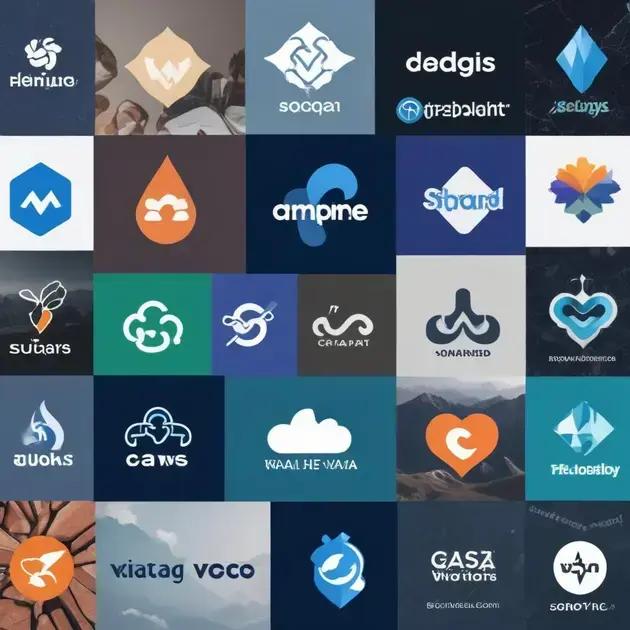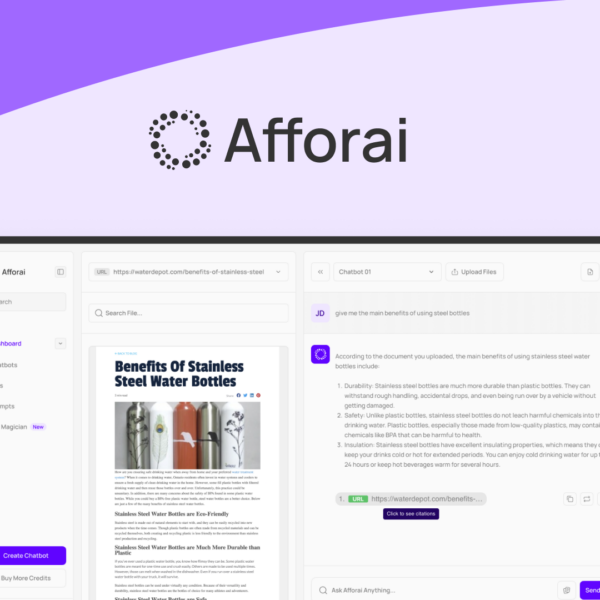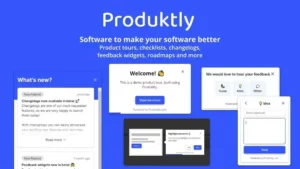In February 2025, the SaaS (Software as a Service) sector saw an exciting wave of investments, spotlighting 12 innovative companies that secured funding. With the digital transformation accelerating, these funding rounds signal not just a trend but a crucial transition in how technology is adapted and utilized across various industries. Whether you’re a budding entrepreneur or a seasoned investor, understanding the dynamics behind these successful fundings can offer valuable insights into what drives growth and innovation in the SaaS domain. Let’s dive into the details of these remarkable funding achievements and what they mean for the future of software solutions.
Overview of February 2025 SaaS Fundings
In February 2025, the SaaS sector experienced significant funding activity, highlighting the growing demand for cloud-based software solutions across various industries. Investors are increasingly attracted to SaaS companies due to their recurring revenue models and scalability. This month, several companies secured substantial capital to expand their operations and enhance their offerings.
Top Funded Companies
Some notable companies that received funding in February 2025 include:
- CloudStream – A data management platform that helps businesses leverage their data efficiently.
- SyncPay – A payment processing solution designed to improve transactional speed and security.
- TaskMaster – A project management tool focused on collaboration and productivity.
- MarketPulse – An analytics platform that provides real-time insights into market trends.
This funding not only enables these companies to grow but also fosters innovation within the SaaS ecosystem, creating new opportunities for users and customers.
Investment Trends
The trends observed in this month’s funding rounds reflect a broader shift towards integrated solutions that streamline business processes. Investors are looking for attributes such as:
- Scalability: Solutions that can grow alongside businesses.
- Integration: Platforms that work well with existing software and processes.
- User Experience: Solutions that prioritize the end-user while delivering robust functionalities.
Such characteristics not only increase the appeal to investors but also ensure that customers receive optimal value from the software they choose.
Notable Success Stories

In February 2025, several SaaS companies achieved remarkable success by attracting significant funding. These success stories highlight the diverse range of innovative solutions available in the SaaS landscape. Each company not only secured investment but also showcased unique offerings that cater to different business needs.
1. CloudSync
CloudSync raised $20 million in funding to enhance its multi-cloud management platform. It helps businesses optimize cloud resources while reducing costs. Their user-friendly interface and robust security features make them a top choice for companies looking to manage multiple cloud services effectively.
2. TeamConnect
Another standout is TeamConnect, which secured $15 million in a Series B round. This collaborative project management tool enables teams to streamline their workflows and improve communication. Its built-in automation features save time on repetitive tasks, making it a preferred choice for remote teams.
3. FlexiFinance
FlexiFinance raised $10 million to expand its financial management SaaS. Focused on small to medium-sized enterprises (SMEs), their platform integrates budgeting, invoicing, and expense tracking. Customers love its intuitive dashboard that provides real-time financial insights.
4. MarketInsights
MarketInsights stands out with $18 million funding aimed at enhancing their market analytics platform. Using AI, their tool provides businesses with deep insights into consumer behavior and market trends. This helps companies tailor their strategies and drive sales effectively.
These success stories illustrate not just the financial backing these SaaS companies received, but also the innovative ideas and solutions they bring to the market. Each of these companies is making strides in their respective fields, proving the vitality and potential of the SaaS industry.
Key Insights into SaaS Investments
SaaS investments in February 2025 reveal important trends and insights about the current marketplace. As the demand for software solutions continues to grow, understanding these insights can help investors and entrepreneurs make informed decisions. Here are some key aspects to consider when looking at SaaS investments this month.
1. Increased Focus on Customer Experience
Investors are increasingly prioritizing companies that deliver exceptional customer experiences. SaaS platforms that enhance user satisfaction through:
- Intuitive Design: Easy-to-navigate interfaces can dramatically improve user interaction.
- Responsive Support: 24/7 customer support adds value and builds trust.
This focus on customer experience often leads to higher retention rates, making them attractive investments.
2. Emphasis on AI Integration
Many SaaS companies are integrating artificial intelligence (AI) into their products. AI-driven features can:
- Automate Tasks: Room for efficiency through automated workflows.
- Enhance Data Analysis: Providing actionable insights quickly.
Investors see this as a way to future-proof their portfolios by investing in innovative solutions that evolve with market demands.
3. The Importance of Scalability
Scalability is a crucial element when considering SaaS companies for investment. Solutions that can easily grow with their customer base attract more capital. Factors influencing scalability include:
- Infrastructure: Cloud-based systems can efficiently handle expanded user loads.
- Modular Features: Companies that can add or modify features as needed provide flexibility for growth.
4. Sustainable Business Models
Investors are increasingly drawn to SaaS companies with sustainable, predictable revenue models. Recurring revenue streams from subscriptions offer confidence and stability. Licensing fees or pay-as-you-go models are also appealing. Transparency in pricing structures can make these companies more attractive investment opportunities.
By keeping these key insights in mind, both investors and entrepreneurs can better navigate the evolving SaaS landscape and identify promising opportunities in the market.
Impact on the SaaS Landscape

The impact of recent SaaS funding rounds is reshaping the technology landscape significantly. As more companies secure investments, they introduce innovative features and solutions that cater to the needs of different industries. Understanding this impact can help businesses and investors navigate the evolving market.
1. Expansion of Offerings
With increased funding, SaaS companies can expand their product offerings. This includes:
- Feature Enhancements: Companies are adding more capabilities to their platforms, allowing users to do more in one place.
- New Integrations: Businesses are creating connections with other software tools, increasing functionality.
This expansion helps attract a broader customer base and enhances user satisfaction.
2. Innovation and Technology Advancements
The funding received not only boosts operational capacity but also encourages technological advancements. Companies are exploring:
- Artificial Intelligence: Integrating AI for automation and smarter analytics.
- Machine Learning: Using algorithms that improve services based on user behavior.
These innovations lead to more efficient and effective solutions, benefiting users around the globe.
3. Increased Competition
As more players enter the SaaS market, competition intensifies. This competition brings better services and pricing strategies. Companies now have to:
- Differentiate Their Products: Focus on unique features or pricing.
- Improve Customer Service: Offer better support to retain users.
Such efforts benefit the consumers as they receive more value for their investments.
4. Focus on Security and Compliance
With the growing number of solutions available, the emphasis on security and compliance has never been greater. Companies are investing in:
- Data Protection: Ensuring user data is secure and private.
- Regulatory Compliance: Meeting industry standards and regulations.
This shift signifies a responsible growth trend within the SaaS landscape, addressing user concerns about data safety.
As we observe these changes, it is clear that the recent funding activities in the SaaS space are driving innovation and improving the overall market environment.
Future Trends to Watch
The future of the SaaS industry is filled with exciting trends and developments that promise to shape how businesses operate. Watching these trends can provide valuable insights for investors and entrepreneurs alike. Here are some key trends to keep an eye on in the coming years.
1. Growth of Vertical SaaS Solutions
Vertical SaaS solutions are designed for specific industries. This trend is gaining momentum as businesses seek tailored software that meets their unique needs. Examples of vertical SaaS include:
- Healthcare: Software to manage patient records and billing.
- Finance: Tools that handle compliance and financial planning.
- Real Estate: Platforms for property management and tenant communication.
By focusing on niche markets, these solutions can provide deeper functionality and drive greater value for users.
2. Remote Work and Collaboration Tools
The rise of remote work has created a demand for better collaboration tools. SaaS companies are focusing on features that enhance teamwork, such as:
- Real-time Editing: Allowing multiple users to work on documents simultaneously.
- Integrated Communication: Combining chat, video, and project management in one platform.
This trend signifies how businesses are evolving to create flexible work environments that promote productivity.
3. Increased Focus on Cybersecurity
As cyber threats grow, so does the importance of cybersecurity in SaaS applications. Companies are investing more in security measures like:
- Multi-Factor Authentication: Protecting user accounts with another layer of security.
- Data Encryption: Safeguarding sensitive information both in transit and at rest.
This trend reflects the industry’s commitment to protecting user data and maintaining trust.
4. Subscription Model Evolution
While subscription models are already popular, they are evolving. Companies are exploring new pricing strategies, such as:
- Usage-Based Pricing: Charging customers based on their actual usage of the software.
- Freemium Models: Offering basic features for free while charging for premium functionalities.
These flexible pricing options can make software more accessible to a broader audience and encourage trials.
5. AI and Machine Learning Integration
Companies are increasingly integrating AI and machine learning into their products. This trend allows businesses to offer:
- Predictive Analytics: Helping users forecast trends and make data-driven decisions.
- Personalization Features: Customizing user experiences based on behavior and preferences.
This integration can lead to more intelligent, user-friendly software applications that meet the evolving needs of businesses.




